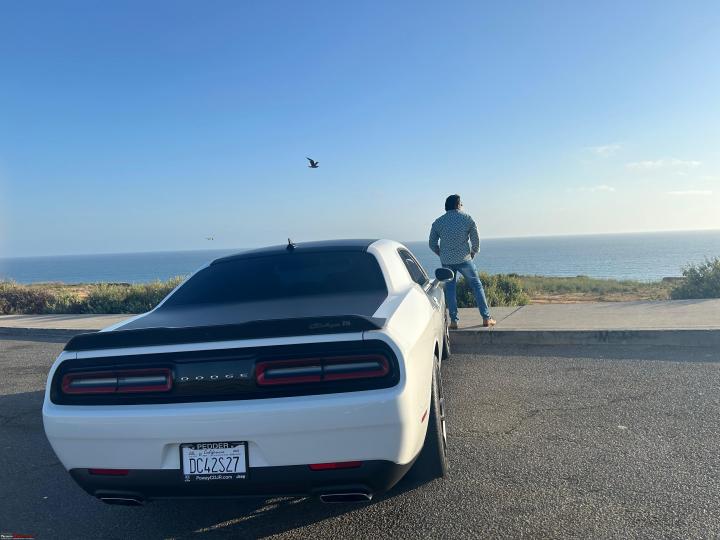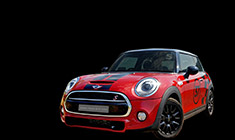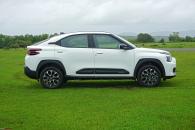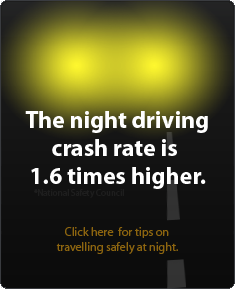News
Common mistakes to avoid while driving in foreign countries
Get the maximum possible insurance coverage. If you cannot afford the insurance premium, you cannot afford the car rental.
BHPian supermax recently shared this with other enthusiasts.
Having recently completed a 1500+ km road trip in Norway, I realized that I had avoided some common mistakes by a combination of luck and planning, but had also fallen victim to at least two avoidable mistakes. This post is not Norway specific, but would hopefully come in handy for anybody who hasn't done a road-trip abroad.
Take pictures of the vehicle, both inside and out.
Ensure that you've taken pictures of the vehicle, both from inside and outside, in reasonably good light. Avoid pickups late in the evening or very early in the morning, as the light may not be good enough for good photographs. Ensure that the mileage readout tallies with the contract, if you have a limited number of miles with the rental, or a varying tariff slab, as per actual usage.
Understand the hiring terms and rules correctly, opt for additional insurance or liability reduction insurance.
Ensure that you understand the hiring terms and conditions carefully. Does the contract stipulate that the car should be fully charged/refueled or is it okay if it is 70% or more full? Not satisfying the requirement could mean a fine, and requests for leniency are generally not accepted. Some rental operators consider small chips on the paint and glass to be normal wear and tear, while others don't. Ask in advance and take optional additional insurance for glass, tires, self-risk reduction etc, whatever you deem acceptable. Be aware of your exact liability. Ignorance is not bliss!
Safe mounting of cameras and other devices.
Ensure that you have appropriate mounts for your mobile phones, cameras etc which you can install and remove safely from the vehicle without damaging the vehicle. The mounts should also be safe and not fixed in a manner where there is a risk of the camera falling outside the vehicle, or blocking your view. If using drones, ensure that you are aware and in compliance of local regulations. Many cities have strict no-fly zones, where even hobby drones are not allowed to be operated. Ensure that the operation of the drones doesn't distract you or any other road users.
Give yourself time to acclimatize.
You may be a seasoned driver in India, but if you are driving abroad, pay heed to the differences. If possible, plan a low-mileage outing on your day 1, where you give yourself time to soak in the differences. If in Europe (and not in the UK), you'll have to drive on the right side of the road. If you are driving a manual car, the gear shifter too will be on the right, and unless you've been driving a VW or Skoda car in India, the positions of the indicators, light adjuster (highbeam/lowbeam) and wiper stalks are most likely to be reversed from what you are used to, so best to explore it at ease, than to get into the thick of it and find out you are making mistakes.
Pay attention to local rules and signs.
Most countries in the EU have similar road signs, but there are key differences in the implementation, which you'd do well to explore before actually starting to drive. Some countries have a default highway/city speed and only note the changes from the defaults, while other countries explicitly state the speed limit everytime it changes. For example, in Sweden, when a 110 road becomes 90, you'll see two signs; a 90 in 200 m sign, alerting you to a lower speed in 200 meters, and then a 90 sign, indicating the new speed. When the 90 road again becomes a 110 road, you'll see an explicit sign showing that the speed limit is now 110 (and not 90). In Norway however, there would be a 70 sign, indicating that the road was now 70, and then a little later, a sign with the 70 crossed out by diagonal parallel lines, indicating that now the default speed is applicable, which is mostly 80 km/h. You'll not see a sign specifying 80 km/h. However, you will see a sign for a higher than normal speed, such as 90 or 100, and then subsequently the crossed out signs. Be aware of these differences, and don't overspeed. Fines for overspeeding can be very high. In some regions, you'll also see signs in the local language noting that you are entering an 'average speed zone'. You'll have to read up before hand if the country you plan to drive has such zones, and try to see examples of these signs online, so you can recognize them when you come across them. In these average speed zones, your vehicle will be photographed when you enter the zone, and also when you exit the zone, and if your average speed across the section is higher than the permitted speed, you'll get a heavy fine, as it's not enough to just reduce the speed where the camera is, but over the entire stretch.
Over-estimate travel time.
Particularly if you are traveling through winding mountain roads, you can't expect to drive at or near the posted limits, so give yourself a good margin over and above the time estimate given to you by Google/Waze. A buffer of around 30% extra total time is considered to be a good buffer, to avoid unnecessary stress.
Avoid both over and underplanning.
Prebooking all stay points and tours can be satisfying, knowing that you won't end up without a place to stay at or depend on luck to get onto a ride or a tour, but when you try to precisely plan everything on a really long tour, you run the risk of plans falling apart due to unforeseen delays. If you can't make it to a preplanned stop, you then run the risk of missing other activities due to cascading effect of delays. Not making any plans puts you at the risk of missing out on sights and things to do on the route simply because you aren't aware of them. Make plans, but have flexibility also.
Plan and research parking places.
Carefully research places where you can park your vehicle, whether you are going to remain in the vehicle, or leave it to go somewhere else. There may be local rules such as time limits, access only during the day etc which you should not violate. Check feedback from other users to avoid places with high crime etc.
Obey rules about waste management.
Always gather your rubbish behind you, so you don't leave a trail of garbage behind you. Don't dump waste water or other waste anyplace other than the designated areas. If you need to defecate in the wild, ensure that you choose a place well away from water bodies and trails, and ensure that you bury your waste deep enough. Most wet-wipes are plastic based. If you use these, ensure that you bag them in a litter bag and take it back with you for later disposal, but better is to simply avoid such wet-wipes. Regular toilet paper can be buried along with your waste.
Don't overdrive.
Ensure that you get adequate rest. Planning a hectic tour which requires too many hours of driving can mean that you don't get enough rest, and this is not only dangerous, but is also a punishable offense which is treated at par with drunk driving, in many EU countries. Also don't drive when you are sick.
Don't overfill or fill with wrong fuel!
Never overfill a tank in any vehicle, as this can damage the engine and you might not have coverage for such damage included in your regular insurance. Be careful not to tank up with the wrong fuel. Never be preoccupied or distracted when you fuel. If by any chance you end up putting the wrong fuel into the tank, do not start the vehicle. Ask for help to push your vehicle away from the pump, and ring your rental's helpline for assistance. Attempting to start can result in damages to the engine which you may not be covered against.
If involved in an accident or cause damage to others.
Don't ever leave the scene of an accident or damage you cause, without speaking to law enforcement or the affected person. An acquaintance from Sweden damaged another car in a parking lot in a different country, and left a note with his contact details but was still cited for 'hit-and-run' by the local police, and a fine applied for the same, in addition to the damages. If you cause damage, try to find the owner, and if that doesn't work, contact local law enforcement and follow their instructions to avoid problems later. If somebody else hits you, try to get a photo of the vehicle's plate. If the person stops, exchange contact information, but if the person flees, it's not your responsibility to chase them down. Don't do it. Notify the police and get a police report to provide the rental agency.
Here's what GTO had to say on the matter:
Great points. Throwing in my two paise:
- At least for the first day (if not two), sit on the passenger seat and observe. Whether it's in a cab or a relative's car. I recently travelled to USA and despite having driven there during my student days & later holidays, I sat in the passenger seat for 3 hours (Ford F150 8-cylinder engine ) from LA to San Diego, just observing traffic.
- On your flight in, watch a few YouTube videos of driving in that foreign country.
- Get the maximum possible insurance coverage. If you cannot afford the insurance premium, you cannot afford the car rental. I always choose the 0 deductible, full coverage. Repairs are obscenely expensive in foreign countries.
- As a petrolhead, rent some awesome cars . The options you get abroad are plentiful, with powerful cars coming for relatively cheap money. This is one of the beasts I've rented off Turo. 6.4L 8-cylinder engine with mad sound, great cruisability and drop-dead handsome styling. The Dodge Challenger is an all-time Top 3 car for me.
Here's what BHPian NomadSK had to say on the matter:
Interesting, some other which I had observed specific to the countries,
Germany - Don't drive continuously in fast lane, specially on Autobahn, there will be someone on your tail in a flash, you won't even come to know. Trust me there will be Schumacher's on the road. While renting the car, the guy at the counter informed me the speed limit of the tyres as 300Kmph, I was like, No, I'm not going at that speed anyway.
Italy - It's crazy on Italian roads with fast cars. Don't go by the size of the teeny weeny cars. You won't miss driving in India.
France - I saw bikes riding between lanes of slow moving cars at a very fast pace, so be careful to severe even slightly within your lane. Not sure but I guess that's an unspoken rule. Also you need to have high visibility vest in the car, generally provided by the car rental, but worth asking before.
My pro tip - When renting a car in EU, find a nice AirBnB/hotel in the outskirts of the city with free parking facility and breakfast and then buy the public transport tickets and roam around the city as much as you can. It's a big pain and waste of time driving in EU popular small congested cities, at times its overwhelming with exits, roundabouts, changing lanes.
Here's what BHPian Jeroen had to say on the matter:
Interesting, some other which I had observed specific to the countries,
Germany - Don't drive continuously in fast lane, specially on Autobahn, there will be someone on your tail in a flash, you won't even come to know. Trust me there will be Schumacher's on the road. While renting the car, the guy at the counter informed me the speed limit of the tyres as 300Kmph, I was like, No, I'm not going at that speed anyway.
Italy - It's crazy on Italian roads with fast cars. Don't go by the size of the teeny weeny cars. You won't miss driving in India.
France - I saw bikes riding between lanes of slow moving cars at a very fast pace, so be careful to severe even slightly within your lane. Not sure but I guess that's an unspoken rule. Also you need to have high visibility vest in the car, generally provided by the car rental, but worth asking before.
My pro tip - When renting a car in EU, find a nice AirBnB/hotel in the outskirts of the city with free parking facility and breakfast and then buy the public transport tickets and roam around the city as much as you can. It's a big pain and waste of time driving in EU popular small congested cities, at times its overwhelming with exits, roundabouts, changing lanes.
Read BHPian comments for more insights and information.






















